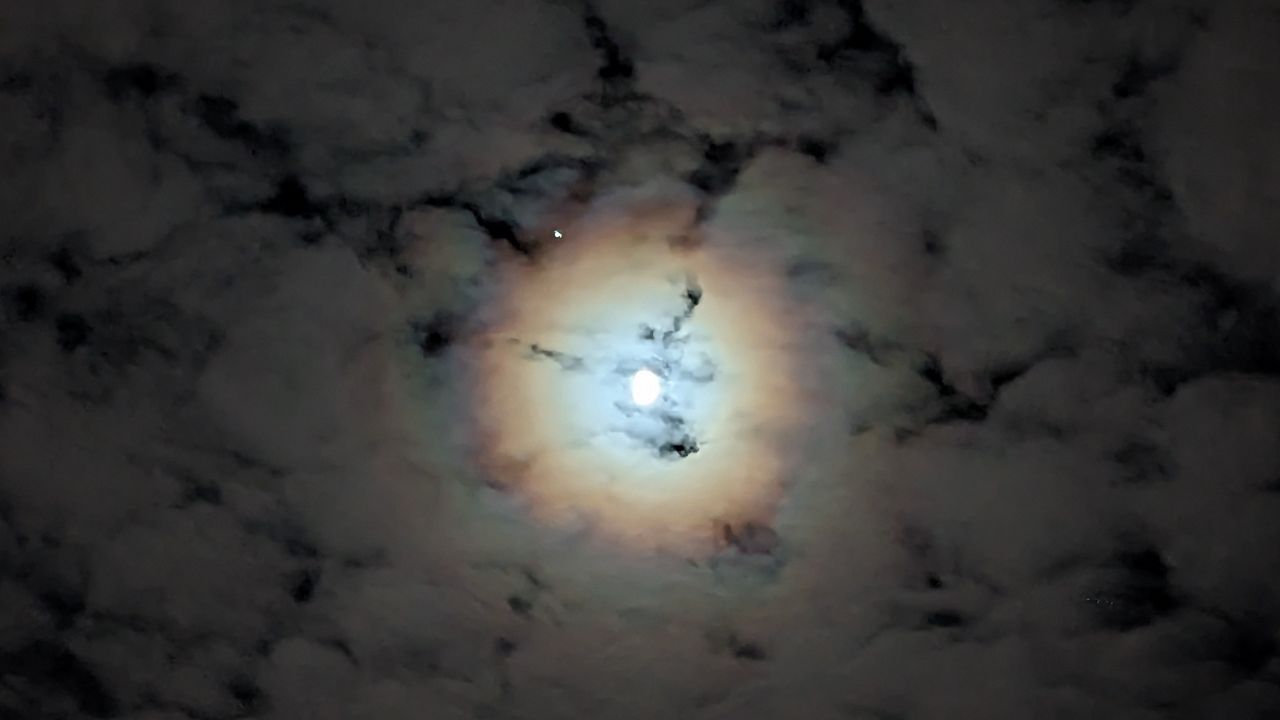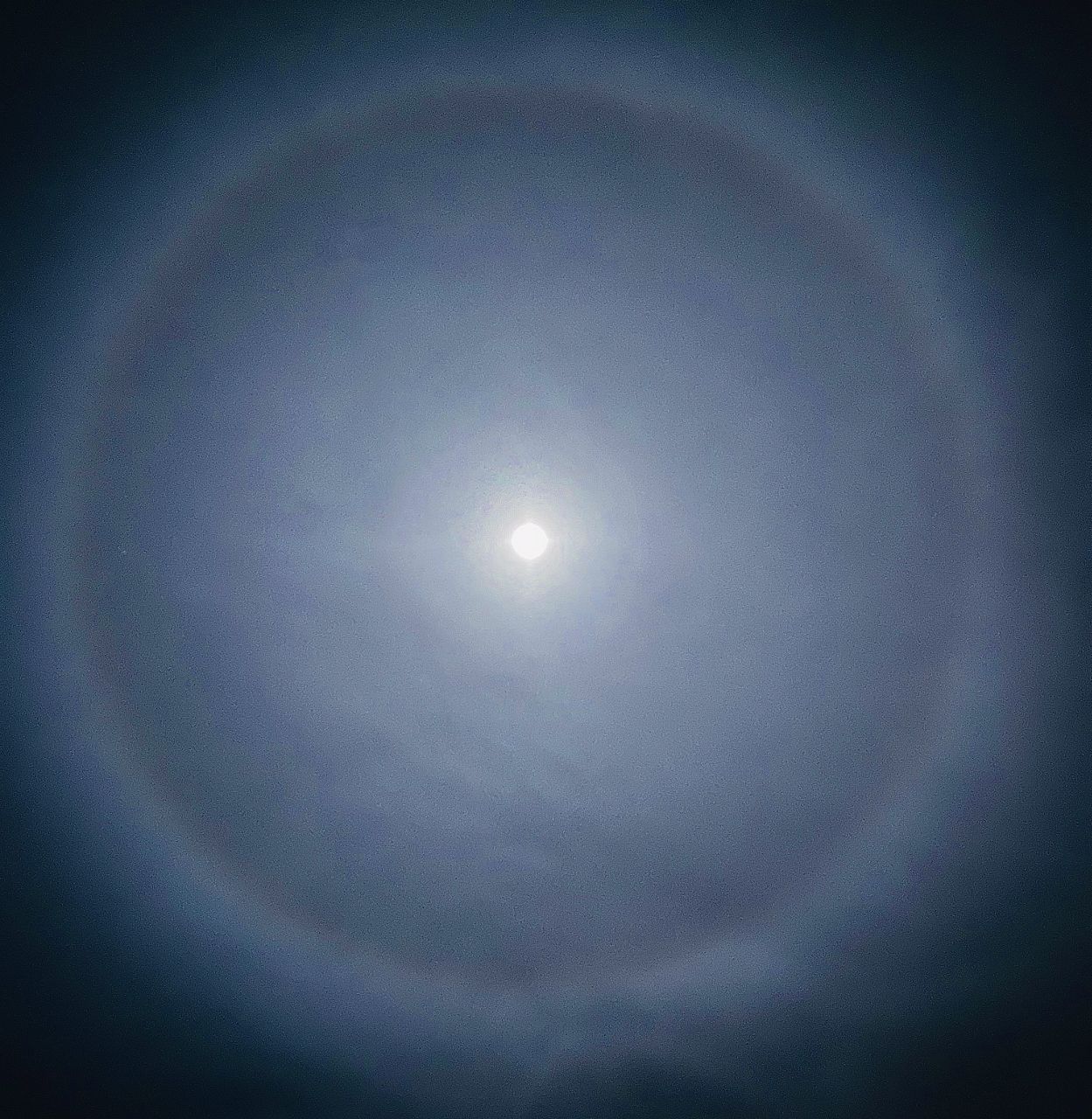“Ring around the moon means rain soon.” Maybe you’ve heard that saying–but what even causes a ring around the moon in the first place, and does that weather folklore hold water?
Halos and coronas
A ring circling the moon is called a halo. A related sight is a corona; that’s when the moon is surrounded by a glow. They’re related but form slightly differently.
A halo happens when light bends and reflects off ice crystals that are lined up just right. These ice crystals occur in high, thin cirrus clouds.
These halos are called “22 degree halos” because the light bends 22 degrees when it hits the ice.
A halo around the moon. (Photo by Matthew Baja)
Coronas appear when moonlight hits liquid water droplets instead of ice crystals. If you look closely, you might even see a faint color.

A corona around the moon. (Spectrum News/Justin Gehrts)
Both of these need quite a bit of light to appear, so they’re typically centered around a full moon.
Prediction power
Can halos or coronas actually tell us about weather changes? They’re not a perfect predictor, but they are useful.
High clouds, such as cirrus, often appear ahead of a weather system. Many times those weather systems eventually bring rain or snow where to you live.
However, they don’t always appear before precipitation, since the moon has to be nearly full and the right clouds need to be present.
Halos sometimes show up during clear skies in the northern U.S. during wintertime arctic outbreaks. Bitterly cold air can carry countless ice crystals, which sometimes align to make a ring around the moon, just as they do with the sun.
Our team of meteorologists dives deep into the science of weather and breaks down timely weather data and information. To view more weather and climate stories, check out our weather blogs section.

